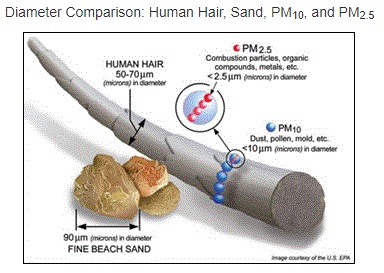MODULE 1 Health and Environmental Effects of Smoke
Burning Wood & Vegetation
While trash burning is always prohibited because of these dangers, even smoke from the legal burning of vegetation can pose a threat to your health. Wood smoke contains a hazardous mixture of chemical substances such as carbon monoxide (CO), nitrogen oxides (NOx), volatile organic compounds (VOCs), dioxins, polycyclic aromatic hydrocarbons (PAHs) and particulate matter (PM). Some of the VOCs and PAHs are irritating, toxic, and/or cancer causing. The chemical makeup and total amounts of these pollutants depend on how the wood is burned. The more completely wood is burned, the more usable energy is produced and less harmful chemicals are emitted.
One of the greatest human health threats from smoke, indoors or outdoors, comes from PM. Wood smoke PM is composed of wood tars, gases, soot, and ashes. Particulate matter is a generic term for particles suspended in the air, typically as a mixture of both solid particles and liquid droplets. The size of particles affects their potential to cause health effects. Small particulate matter with diameters of less than or equal to 10 microns (PM10) or 2.5 microns (PM2.5), can cause burning eyes, runny nose, and be inhaled into the deepest recesses of the lungs where they stay for long periods of time. Breathing PM10 and PM2.5 can lead to bronchitis, chronic respiratory issues and heart disease.

Short-term exposures to particles (hours or days) can aggravate lung disease, causing asthma attacks and acute bronchitis, and may increase susceptibility to respiratory infections. To learn more about asthma, visit www.epa.gov/asthma, www.noattacks.org or www.cdc.gov/asthma. To learn more about wood smoke health effects, view US EPA’s Health Effects of Breathing Wood Smoke.